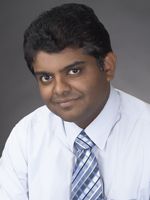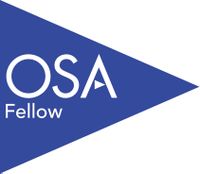Recent News
NQVL Design Phase Award
October 1, 2025
CHTM Joins NSF's NQVL Pilot Projects
August 9, 2024
OSE PHD, Dr. Xuefeng Li - Wins The Outstanding Interdisciplinary Graduate Programs Award
May 10, 2024
Dr. Ali Rastegari - 2024 OSE Best Dissertation Award Winner
May 10, 2024
News Archives
Sanjay Krishna elected 2016 OSA Fellow
December 1, 2015

Sanjay Krishna
CHTM Director
Fellows of The Optical Society are elected based on their significant contributions to the advancement of optics and photonics and are selected based on several factors, including specific scientific, engineering, and technological contributions, a record of significant publications or patents related to optics, technical or industry leadership in the field as well as service to OSA and the global optics community.
Sanjay Krishna, director of the University of New Mexico’s Center for High Technology Materials (CHTM), was one of 77 members of the Optical Society of America (OSA) elected to the latest class of OSA Fellows who have served with distinction in the advancement of optics and photonics. Krishna’s citation is for contributions to the development of infrared detectors and focal plane arrays.
“I am really honored to be selected as a Fellow of the Optical Society of America,” said Krishna, who is also a professor in Electrical and Computer Engineering. “This is very timely as there is a large initiative related to photonics and optics at the university, city, state, national and international levels. This was evident at the event hosted by UNM last month to celebrate the International Year of Light. Being selected as an OSA fellow in 2015, that the United Nations has declared as the International Year of Light, is definitely special.”
Krishna’s research involves the development of next-generation infrared imagers using nanoscale quantum confined systems such as quantum dots in heterostructures and superlattices.
“We are one of the few university laboratories in the country that have an end to end integration from design, crystal growth of material, device fabrication and focal plane array development into infrared cameras,” Krishna said. “This rounds off the learning experience for the student to enable them to get a breadth of ‘material to manufacturing’ experience.”
Excerpted from a story published by Steve Carr in the UNM Newsroom on November 25, 2015.



